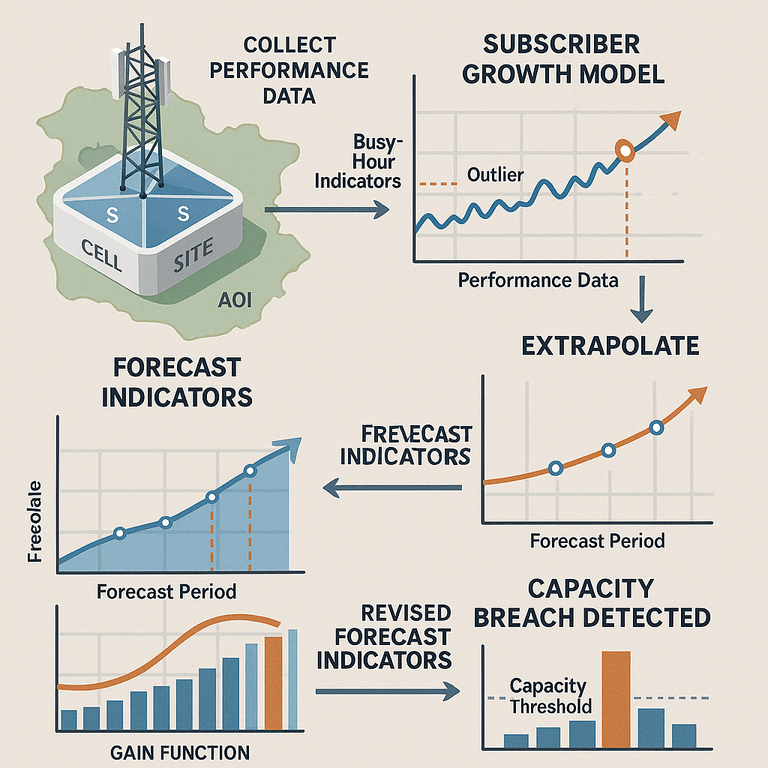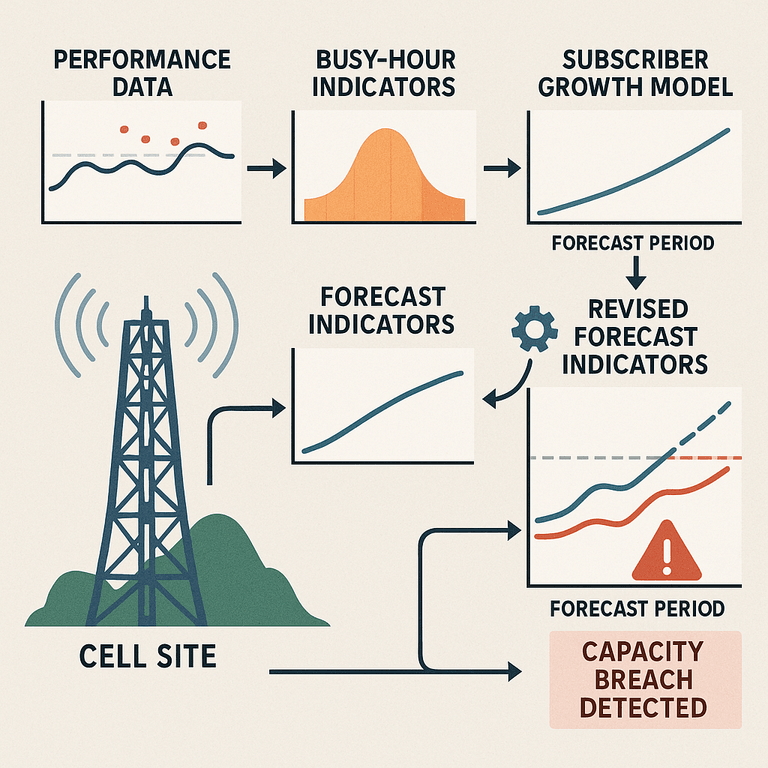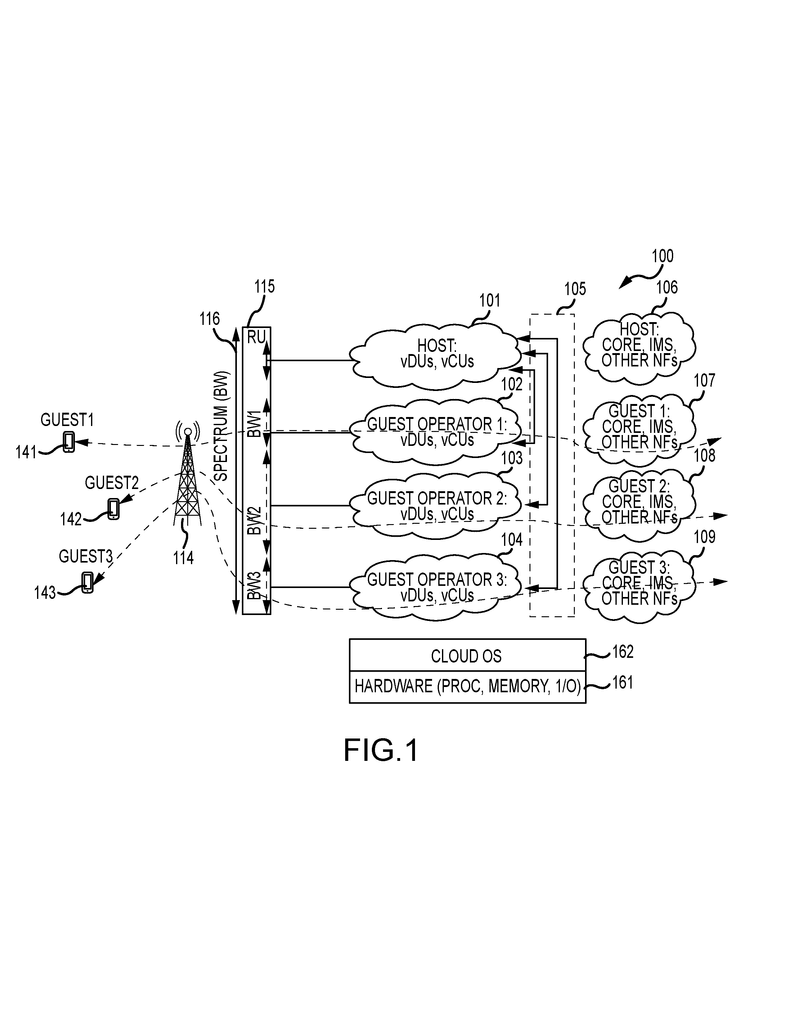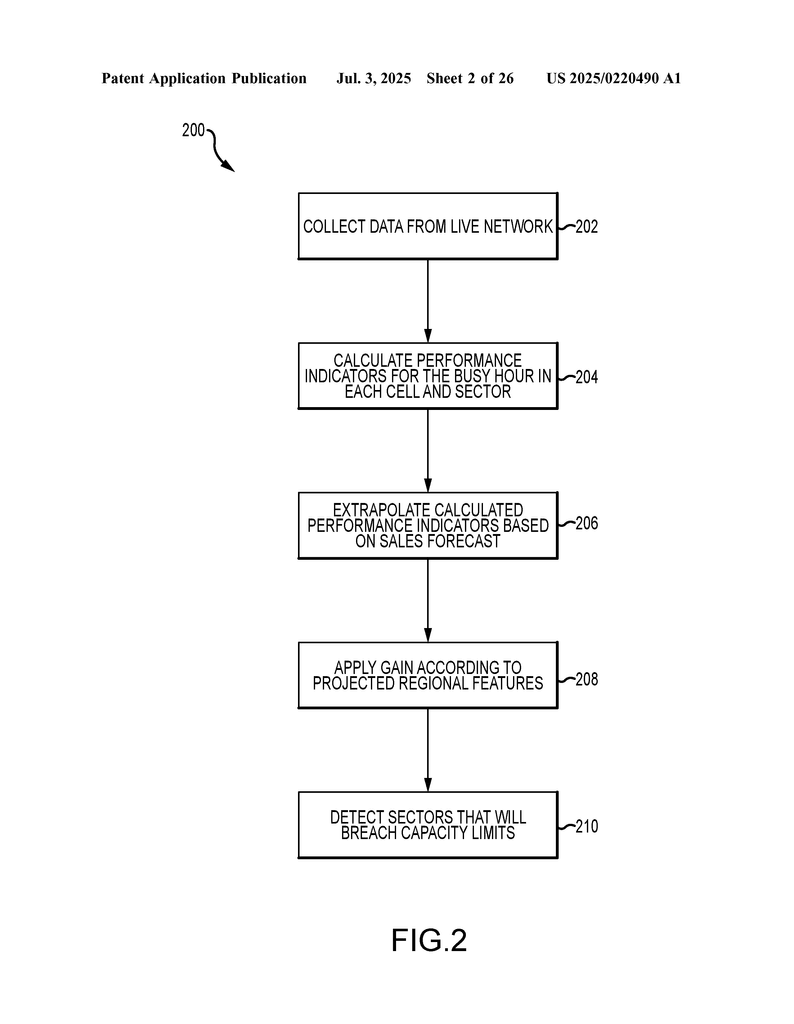Invented by Whdan; Ahmed Awwad, DISH Wireless L.L.C.
Modern wireless networks are changing fast. As more people use smartphones and data, keeping up with demand is getting harder. If networks become too crowded, people experience slow speeds, dropped calls, or lost connections. This article explains a new invention that helps phone networks spot problems before they happen, so users keep getting good service.
Background and Market Context
Wireless networks are everywhere. We use them every day for calls, texts, videos, and internet browsing. But as more people buy phones and tablets, and as more devices connect to the internet—like smart TVs and home gadgets—these networks can get crowded, especially during busy hours. When too many people try to use the same network at once, it can slow down or stop working for everyone.
Phone companies need to keep their networks running smoothly, but that is not simple. Building new cell towers or adding more equipment takes time and costs money. Predicting when and where networks will become overloaded is tricky. If a company waits until there is already a problem, customers may leave for better service.
Networks today are not just made of physical towers and wires. Many functions, like routing calls or managing data, now happen in the cloud. This means some parts of the network can be upgraded quickly, but equipment like antennas still takes time to change. With new standards like Open Radio Access Network (Open RAN), companies can use more flexible and cloud-based systems. But this also means they need smarter tools to spot and fix problems before users notice them.
The market is moving toward more open, virtual, and software-driven networks. This change brings many benefits, like saving money and making upgrades faster. But it also makes managing network traffic more complex. Companies need solutions that can look at real data, predict future growth, and tell them exactly where and when to upgrade—so customers always get the speed and reliability they expect.
Scientific Rationale and Prior Art
In the past, networks were mostly built on closed, specialized hardware. Each cell tower had its own unique equipment, and adding new capacity meant installing new machines or wires. Network managers would use simple rules or static thresholds to spot when a network was getting too busy. For example, if a cell site reached 85% of its maximum usage, that might trigger an alert.
But this approach has many problems. Static thresholds do not account for sudden spikes in use or changing patterns throughout the day. They also do not predict what will happen as more people join the network. By the time an alert goes off, customers may already be having issues.
Some tools try to use more advanced data analysis, looking for patterns in usage over time. These might use historical averages or basic forecasting methods to guess when a network will need more capacity. But these tools often miss the mark because they do not take into account future growth in subscribers, changes in how people use data, or new features that could make the network more efficient.
Cloud-based networks and Open RAN add new complexity. Some network functions can be expanded quickly in the cloud, but antennas and radios at cell sites cannot. Prior art does not provide a full solution for predicting where physical upgrades are needed versus where software changes will help.
The scientific need is clear: networks need a smarter way to collect and analyze real-time data, understand the busiest hours, predict subscriber growth, and adjust for new efficiencies. They also need a way to visualize and plan upgrades in specific areas, not just across the whole network. Prior solutions are too simple, too slow, or too narrow to keep up with the rapid changes in modern, cloud-based wireless networks.
Invention Description and Key Innovations
This new invention tackles the problem head-on. It gives network operators a step-by-step process to find and fix potential trouble spots in their network before customers notice any problems. The process relies on smart data collection, forecasting, and adjustment for new network features.
First, the system collects performance data from each cell site in an area. Each site is made up of sectors, and each sector has its own cells. The system keeps track of how much data is moving through each part, how many users are connected, and how much of the network’s resources are being used.
A key part of the process is finding the “busy hour” for each sector. This is the hour of the day when that part of the network is used the most. The system uses a percentile method to ignore unusual spikes (outliers) and focuses on the busiest, but most typical, hours. For example, it might look at the busiest hour on three different days, average them, and use that as the busy-hour indicator.
Next, the system forecasts how many more subscribers will join the network in the future. It does this by comparing the number of users at the start and end of a chosen period—like the next quarter or year. Using this growth model, the system projects how busy each sector and cell will become as more people join.
But the system goes further. It knows that networks sometimes get new features that make them more efficient. For example, a software update might let the network handle more users with the same equipment. The system uses a “gain function” to simulate these improvements, so its forecasts are realistic and do not ask for unnecessary upgrades.
If the revised forecast shows that any cell or sector will go over a set capacity limit, the system flags it as a potential breach. It can then recommend exactly where and when to add capacity—like building a new cell site, adding a sector, or upgrading software. The system can also show these trouble spots on a map, complete with visual cues about which sectors are fine, which might break, and which are already planned for upgrades.
This approach is much smarter than old methods. It looks at real-time data, forecasts growth, adjusts for new features, and gives clear recommendations. It can even break down the problem to the exact sector or cell, not just the whole region. By doing this, network operators save money, avoid unnecessary upgrades, and keep customers happy.
The invention can be used in many ways: as a process run by network engineers, as a computer-based system with a processor and memory, or as software stored on a computer-readable medium. It is flexible enough to work with different types of networks and different brands of equipment. Most importantly, it helps networks stay ahead of growing demand, so users always have the speed and reliability they need.
Conclusion
Wireless networks must keep up with growing demand and changing technology. This new invention gives operators a powerful tool to predict and solve capacity problems before they affect users. By using real data, smart forecasting, and adjustments for new network features, it ensures that upgrades happen where and when they are needed most. This not only saves money—it also keeps customers connected and satisfied, which is the ultimate goal for any service provider. The invention represents a big step forward in managing modern, cloud-based wireless networks in a fast, smart, and efficient way.
Click here https://ppubs.uspto.gov/pubwebapp/ and search 20250220490.




